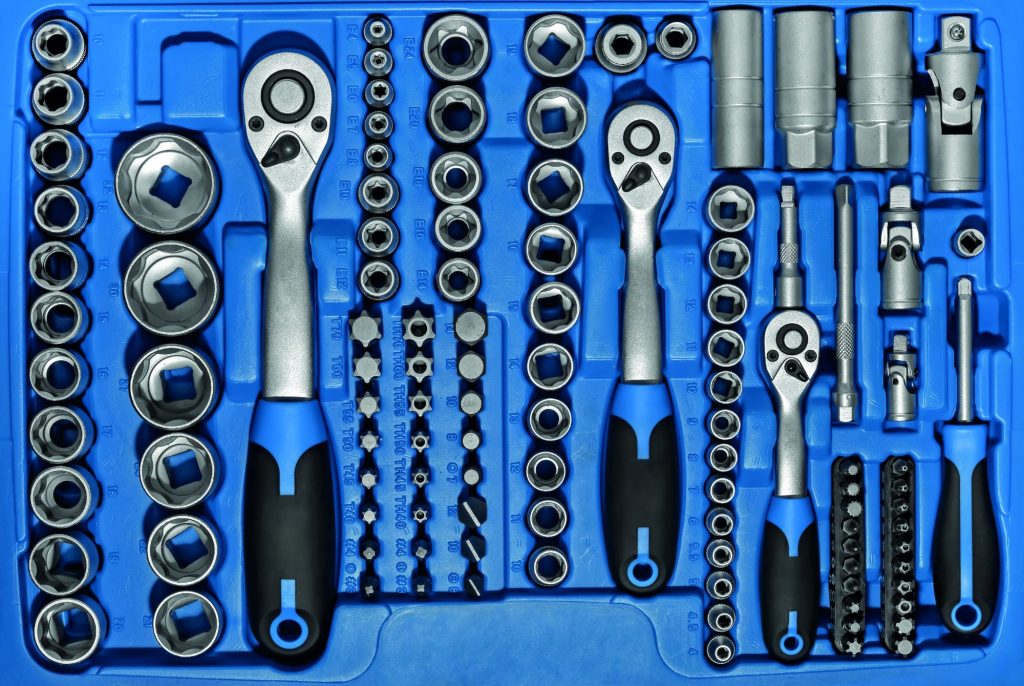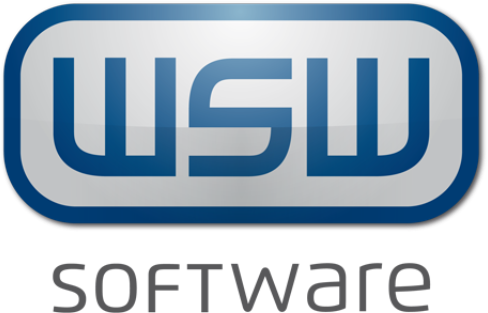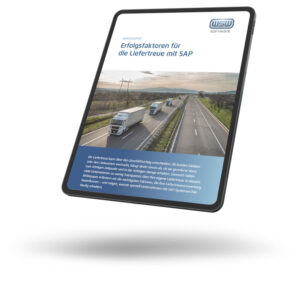Anyone who supplies Mercedes Benz / Daimler has to deal with terms such as INTO-SC or RFID. The recommendations of the VDA also play a role here. Regardless of whether you have to deal with these topics for the first time or are looking for an end-to-end software solution that can map these requirements, we support you in supplying Mercedes Benz / Daimler.
Supplying SAP: The most important special processes
Mercedes-Benz INTO SC - Questions & Answers
- Why does the Mercedes-Benz INTO SC process exist?
- How does the process work?
- Where do problems arise with the PUS?
- How can I map the process in SAP?
- What are the consequences of the SAP problems with PUS processing?
- What has changed with the current version 3 of the INTO-SC process?
- What do I have to consider as a supplier with regard to the new version?
- How do you map the requirements with WSW add-ons?
- How do you benefit as a supplier of WSW add-ons?
RFID processes from Mercedes-Benz - Questions & Answers
Mercedes-Benz INTO SC
Why does the Mercedes-Benz INTO SC process exist?
The main objective that Mercedes-Benz wants to achieve with the INTO-SC process (Inbound Transparency and Optimization in the Supply Chain) is efficient utilization of truck capacity. The individual transports are to be utilized in the best possible way. The priority is therefore not only exactly which goods Mercedes-Benz needs, but also which and how many goods can be transported with the delivery. This applies both to suppliers who fill an entire truck and to milk run transports that collect deliveries from several suppliers.
The main aim of Mercedes Benz is to use this process to achieve better transparency for all parties involved and to be able to react more quickly to deviations. However, the process often leads to problems for suppliers.
How does the process work?
The so-called pick-up sheets (PUS) are a special feature of the INTO SC process. Suppliers also receive a classic delivery call-off (in accordance with VDA recommendation 4905). However, this is only used for preview purposes and cannot be used as a real delivery call-off. In addition, it is generated from a different system on the Mercedes Benz side than the pick-up sheets. The data can therefore differ significantly.
The pick-up sheets reach the supplier two days in advance. They contain basic information and data. This includes the PUS number, the pick-up date and time, the material numbers and the corresponding quantities. One PUS number corresponds to exactly one delivery.
Where do problems arise with the PUS?
The first challenge for suppliers is to map this INTO-SC process fundamentally. But even if the delivery call-offs and PUS can be mapped in your own IT systems, errors can still occur. These problems usually occur when there are changes:
- Either the supplier determines that he cannot fulfill a PUS. Then he can enter changes via the Mercedes-Benz portal.
- Or Mercedes-Benz makes changes at short notice.
In both cases, the supplier receives additional PUS: on the one hand, he receives another pick-up sheet with the original PUS number, but with adjusted quantities. And there is also a special pick-up sheet (SPUS), which then contains the changed quantities with an adjusted delivery date.
Example: A supplier is supposed to deliver 1000 units of a certain material on a certain date. When he realizes that he can only deliver 600 pieces, he passes this change on to Mercedes Benz. He then receives an updated PUS with the number of 600 pieces and an SPUS with the remaining quantity of 400 pieces and a new pick-up date (which the supplier has previously confirmed) The process sounds logical, but the implementation is technically difficult, at least for suppliers who work with SAP systems.
How can I map the process in SAP?
There are basically three ways of mapping the INTO-SC requirements in SAP. One obvious option, for example, would be to use Delivery and call-offsbut this requires some additional programming. Another, but rarely used option is Volume call-offs. This process should only be used if it is known within the company, as dispatchers and shipping staff have to use completely different workflows. As this is rarely practiced, call-offs are rarely used in conjunction with INTO-SC.
The Mercedes-Benz process is best described with so-called Delivery orders because they are best able to map a PUS. However, there are also gaps in the SAP standard that can pose a problem for suppliers.
What are the consequences of the SAP problems with PUS processing?
The SAP standard does not provide for processing via PUS in this form: Just like delivery call-offs, PUS are also transmitted to the SAP system via EDI message. However, SAP systems are not able to make changes to so-called delivery orders via an incoming EDI message. Instead, each EDI message is created as a new PUS. In the example described above, an SAP system would therefore create three PUSs without a user being able to trace which PUS contains the outdated data, which contains the current data and which SPUS contains the resulting adjustments from the current PUS.
Suppliers have problems mainly due to the mass of incoming messages. Checking, comparing, correcting and manually updating them takes a lot of time. If you don't have the time and overview, mistakes will happen.
If you do not manage to adjust your data in time (i.e. transfer a smaller quantity to an existing PUS or create the new PUS and delete the old one), you will have the wrong data in the system. These adjustments must be made before your MRP controller or shipping department has created a delivery for the PUS. Picking and packing may then have already started and the delivery leaves your yard with errors.
These faulty deliveries arrive at Mercedes Benz as follows:
The PUS number is missing from your shipment documents and ASNs.
The PUS number is not correct
Several deliveries are made that have the same PUS number.
What has changed with the current version 3 of the INTO-SC process?
To increase transparency for all parties involved, Mercedes Benz has adapted the process once again. The so-called V3 of INTO SC is intended to help suppliers identify PUS more clearly and track adjustments. Additional data is transmitted in the PUS messages for this purpose. All specifications can be found in the Mercedes Benz Guideline VDA 4985 T2 Global DELJIT 3.0.
These changes are particularly relevant:
Versioning
Status
Process labeling
Version 3 was announced in summer 2023. Suppliers are required to ensure the implementation of the changed process. However, there is currently no precise information on who must have implemented this process and when.
What do I have to consider as a supplier with regard to the new version?
The additional information that will be transmitted with the PUS in future is intended to create more transparency. However, this can only work if you as a supplier are able to transfer this information into your system and evaluate it.
Regardless of the version, suppliers need two basic functions in their SAP system:
Transparency
Automation
Mercedes-Benz INTO SC V3 with WSW add-ons
Our add-ons have been supporting Mercedes Benz suppliers with implementation in the SAP system for years. Our add-ons ensure that you can also map V3 smoothly and with few errors in your SAP system.
Our add-ons for INTO SC V3 offer these functions
You benefit from our add-ons precisely where manual effort and errors usually occur:
- Our add-ons cover all the requirements of the Mercedes Benz guideline, including the modified versions of VDA recommendations (VDA 4985 for the incoming PUS, VDA 4913 as the old version of the outgoing ASN, VDA 4987 for the future ASN and VDA 4905 for the delivery call-off).
- We ensure that incoming PUS are checked and assigned to the correct PUS number.
- You benefit from the automation of your processes, especially with the new requirements: When adjustments are made, the current data is automatically transferred and outdated data is deleted.
- Our WSW add-ons also map the correct version and status labeling according to V3, which cannot be adopted by the SAP standard.
- You receive support even for last-minute changes: if a delivery has already been created for a PUS (and can therefore no longer be corrected), your dispatcher receives a specific notification immediately so that he can check whether the delivery can be canceled or whether he needs to contact the customer.

How you benefit as a supplier
You can handle the entire INTO-SC process directly in your SAP system.
You save a lot of time thanks to automatic checks and corrections
This drastically reduces the susceptibility of your own processes to errors.
Your deliveries leave your site correctly and with the correct data (e.g. in the ASN)
Executing RFID processes from Mercedes-Benz/Daimler directly in SAP
Daimler and Mercedes-Benz want to use RFID technology to automatically record delivered components in the incoming goods department and thus streamline the process.
RFID process for special load carriers
Daimler equips the special load carriers that travel back and forth between its own plants and suppliers in firmly defined cycles with a fixed RFID tag (on-metal or smart label) in accordance with VDA 5501. The tag contains an identification number (ID) by which a load carrier can be uniquely identified and which must be transmitted in the shipping notification. The SAP standard is not able to transfer these ID numbers in the shipping notification.
RFID process for universal load carriers
The back of the goods tags (VDA 4902 label) for universal load carriers is provided with a single-use RFID tag. It must be printed with the ID of the associated load carrier in accordance with Daimler specifications. SAP ERP and S/4HANA offer too little support here, as the package ID cannot be generated automatically and stored in the handling unit (HU). In addition, there are no functions for correctly labeling the Daimler RFID label, describing the RFID tag with this ID via coding, and printing the label.
WSW Solutions and Services
Regardless of whether you want to handle BMW deliveries in your SAP system or use your own system: WSW Software supports you with suitable solutions and years of expertise in OEM supply.


